The Sources of the Allier on the Moure de la Gardille |
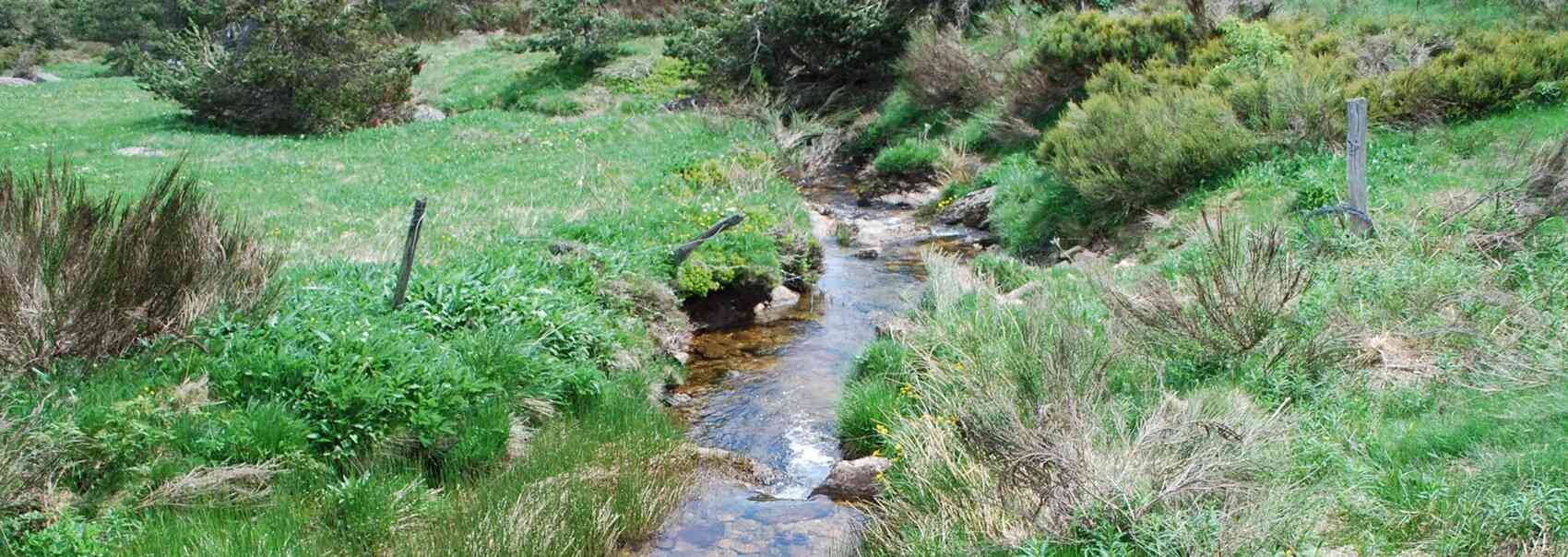
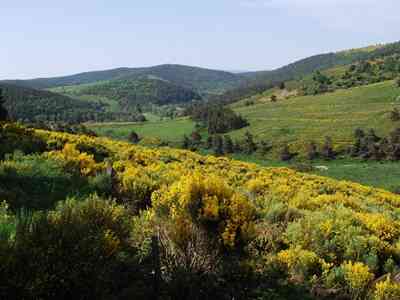 The summit of the Moure de la Gardille, reaching 1503 m, is located to the west of La Bastide-Puylaurent. It is a true paradise for hikers, hunters, and foragers from all backgrounds—a vast grand no man's land encompassing the 10,000 hectares of the immense forest of the former abbey of Mercoire. Here, the reliefs are gentle, marked by a long line of panoramic ridge traversed by the GR7, the long-distance trail connecting the Vosges to the Pyrenees, and among the most famous in France.
The summit of the Moure de la Gardille, reaching 1503 m, is located to the west of La Bastide-Puylaurent. It is a true paradise for hikers, hunters, and foragers from all backgrounds—a vast grand no man's land encompassing the 10,000 hectares of the immense forest of the former abbey of Mercoire. Here, the reliefs are gentle, marked by a long line of panoramic ridge traversed by the GR7, the long-distance trail connecting the Vosges to the Pyrenees, and among the most famous in France.
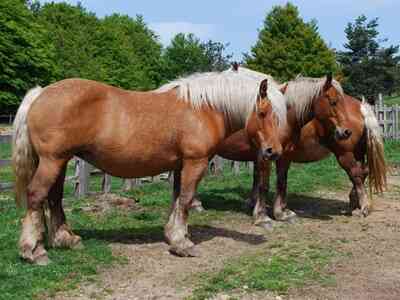 From the summit, the view is spectacular. To the north and east, one can see the Mezenc, the Haute Ardeche, and the Charpal lake. To the south, two parallel chains stretch as far as the eye can see: the Goulet in the foreground and, in the background, the ridges of Mont Lozere blocking the horizon. We are perched on the roof of France, not far from the sources of the Allier, which flows towards the Loire, and the Chassezac, which flows into the Rhône. On the slopes of the Goulet massif, there are also the sources of the Lot, destined to join the Garonne. Just for this panorama, the climb is worth it (only in good weather!).
From the summit, the view is spectacular. To the north and east, one can see the Mezenc, the Haute Ardeche, and the Charpal lake. To the south, two parallel chains stretch as far as the eye can see: the Goulet in the foreground and, in the background, the ridges of Mont Lozere blocking the horizon. We are perched on the roof of France, not far from the sources of the Allier, which flows towards the Loire, and the Chassezac, which flows into the Rhône. On the slopes of the Goulet massif, there are also the sources of the Lot, destined to join the Garonne. Just for this panorama, the climb is worth it (only in good weather!).
But today, our goal is somewhat different: we are seeking the source of the Allier. We want to discover this first trickle of water and drink from it, as one quenches their thirst from the Loire by splashing in the clear water of a "bachat" in the Gerbier barn. Three hundred meters higher, we reach the ridge path, which will lead us to the summit of the Moure de la Gardille. The beauty of the landscape is breathtaking, and along the way, we encounter about thirty hikers accompanied by three pack donkeys.
At the foot of the Moure, at the fork, we find a modest pine sign, hand-carved, indicating the source 150 m "off the beaten track," on the Chasserades slope. We continue on foot, as from the first slope, the mountain narrows into a semblance of a ravine, plunging under the dark vault of the beech forest.
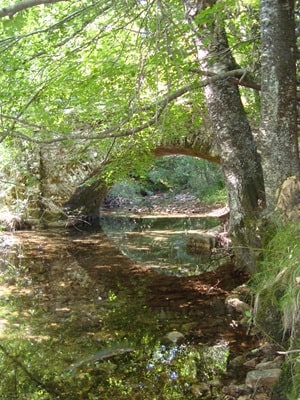 On a carpet of dead leaves, keeping our eyes peeled, we suddenly spot a trickle of water flowing into a small pond. The sun plays in the water, making its reflections sparkle through the leaves fluttering in the wind—the sight is striking: here is the Allier, just born. But is this really the source we are looking for? On our topoguide, a pretty enameled plaque is supposed to be here, commemorating the adventure of three young people from Langeac who, in 1992, walked up the Allier from Langeac to its source in twelve days.
On a carpet of dead leaves, keeping our eyes peeled, we suddenly spot a trickle of water flowing into a small pond. The sun plays in the water, making its reflections sparkle through the leaves fluttering in the wind—the sight is striking: here is the Allier, just born. But is this really the source we are looking for? On our topoguide, a pretty enameled plaque is supposed to be here, commemorating the adventure of three young people from Langeac who, in 1992, walked up the Allier from Langeac to its source in twelve days.
Whether it concerns the Loire, the Nile, or the Mekong, there have always been controversies about the exact sources. We would have liked to avoid this kind of confusion, but here, there is no trace of the plaque. However, on the trunk of a beech tree, a painted inscription in the same yellow as the trail markers indicates "ALLIR," with a final "R." Spelling mistake or local patois? A mystery. One kilometer further, we finally arrive at a small cement dam, inaugurated in 1995 by the mayor of Chasserades: this is the first development on the Allier. The plaque is indeed there.
 This day ends on a very positive note, especially since we extend it in good company. On the terrace, we met two female hikers traveling the Stevenson Trail (GR70) from Monastier-sur-Gazeille to Saint-Jean-du-Gard. They enthusiastically talk about the guest house L'etoile in La Bastide-Puylaurent.
This day ends on a very positive note, especially since we extend it in good company. On the terrace, we met two female hikers traveling the Stevenson Trail (GR70) from Monastier-sur-Gazeille to Saint-Jean-du-Gard. They enthusiastically talk about the guest house L'etoile in La Bastide-Puylaurent.
The owner of the establishment left them a strong impression: half-Greek, half-Belgian, a musician, and an adventurer in his spare time—a true character. Philippe Papadimitriou is a modern-day cowboy, boasting that he has only read five books in his life. A "hands-on" man, who could undoubtedly provide us with information about the source.
We decide to stop by his place on the way back. The giant welcomes us with his large, clear, and surprised eyes: "The source of the Allier? Do I know it? No. But what does it matter?" He is right, well spotted, the Greek. The trickle of water under the beeches is quite enough for us. The "official" source, the "true" one? It doesn't matter. The sun is shining, Lozere is beautiful, and life is good.
***
The watershed line between the Cevennes and the Margeride crosses this territory, which lies between two major drainage basins: the Rhône-Mediterranean basin and the Loire-Brittany basin. As a result, the hydrographic network of the municipality is very dense, with numerous streams and "valats" (a Cevennes term for a narrow stream), such as the Rieufrais stream or that of the Gouttes. On the side of the Loire-Brittany basin, the Allier joins the gorges of the same name, then the Loire, while the southern tributaries flow towards the Chassezac and end their journey in the Ardeche, in the Rhône-Mediterranean basin. This water abundance has allowed for the construction of a dam in Puylaurent, but it also represents a significant hazard, as the territory is regularly subjected to heavy rains, sometimes Cevennes episodes, causing floods. Finally, let us recall that it is to the west of La Bastide, near the Moure de la Gardille, on the former commune of Chasserades, that the Allier takes its source—this is where the first trickle of this 420-kilometer long river is born.
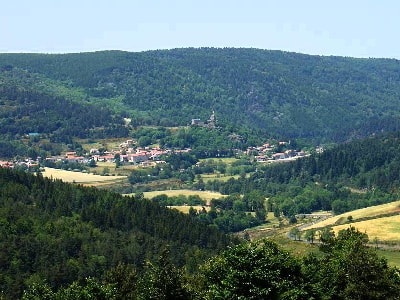 Coypu and beavers are among the species that can be observed along the Allier, a river rich in biodiversity. The fish population is particularly varied, including species such as trout, grayling, and pike. However, the presence of numerous dams on the Loire has led to the near-disappearance of the Allier salmon (Salmo salar). Several factors are responsible: the absence or inadequacy of fish ladders, reduced water flow, siltation of spawning grounds, decreased dissolved oxygen levels, increased average temperatures, as well as poaching. Fortunately, many volunteer efforts have been deployed for years to try to reintroduce this mythical fish, which is the origin of a millennia-old cultural tradition.
Coypu and beavers are among the species that can be observed along the Allier, a river rich in biodiversity. The fish population is particularly varied, including species such as trout, grayling, and pike. However, the presence of numerous dams on the Loire has led to the near-disappearance of the Allier salmon (Salmo salar). Several factors are responsible: the absence or inadequacy of fish ladders, reduced water flow, siltation of spawning grounds, decreased dissolved oxygen levels, increased average temperatures, as well as poaching. Fortunately, many volunteer efforts have been deployed for years to try to reintroduce this mythical fish, which is the origin of a millennia-old cultural tradition.
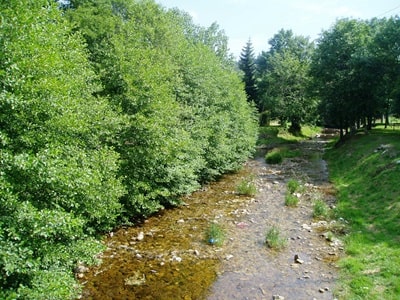 Since the late 1990s, restoration efforts have been implemented to encourage the return of salmon to the Allier. These initiatives include the establishment of developments to facilitate their passage, habitat restoration, and management of aquatic ecosystems.
Since the late 1990s, restoration efforts have been implemented to encourage the return of salmon to the Allier. These initiatives include the establishment of developments to facilitate their passage, habitat restoration, and management of aquatic ecosystems.
Repopulation programs have also been carried out to increase the salmon population. These efforts are bearing fruit, and there have been reports of salmon swimming upstream in recent years. However, the situation remains fragile, and the preservation of their habitat and living conditions in the Allier is crucial to ensure the survival of this emblematic species.
The Allier salmon holds the distinction of having the longest migration in Western Europe. In 2018, 389 salmon crossed the Vichy passage, while the average of the previous five years was 677. To ensure the viability of the species in the river, it is estimated that at least 2,000 adult passages are needed per ascent.
Over the past twenty years, record passages were recorded in 2003 and 2015, with approximately 1,200 salmon. According to the Allier Salmon Protection Association, the main barriers to migration are the Poutes dam in Haute-Loire, despite developments, the threshold or dam of the Lorrains in Nievre (intended to supply the lateral canal to the Loire), as well as the presence of predators such as the catfish and the cormorant, of which a colony has established itself downstream of Vichy.
The GR470, also known as the Allier Gorges Trail, is a magnificent long-distance hiking path that follows the Allier from Brioude in Haute-Loire to the Moure de la Gardille. The route of about 200 kilometers crosses varied landscapes, impressive gorges, dense forests, and charming villages.
Former holiday hotel with a garden along the Allier, L'Etoile Guest House is located in La Bastide-Puylaurent between Lozere, Ardeche, and the Cevennes in the mountains of Southern France. At the crossroads of GR®7, GR®70 Stevenson Path, GR®72, GR®700 Regordane Way, GR®470 Allier River springs and gorges, GRP® Cevenol, Ardechoise Mountains, Margeride. Numerous loop trails for hiking and one-day biking excursions. Ideal for a relaxing and hiking getaway.
Copyright©etoile.fr